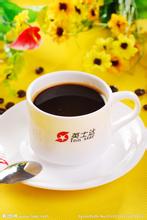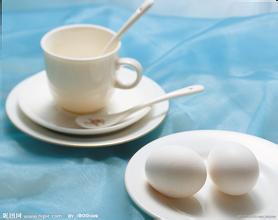Unique flavor of Colombian coffee taste characteristics of boutique coffee beans
Washington was planned by U.S. Army Major Pierre Charles Ladyman 39, who also designed New York's Federal Hall. The planning at that time
It is based on horse-drawn carriages as a basic means of transportation, so Washington's road system is not suitable for modern motor transportation systems. At present, Washington is regarded as the city with the worst road traffic conditions in the United States. From 1791 to 1792, Andrew Ellicott and Benjamin Banneker, an African-American free man, surveyed the boundaries of the District of Columbia, burying a boundary marker per mile. Many of these boundary markers still exist. The foundation of the White House was laid on October 13, 1792. On August 24, 1814, British forces captured the District of Columbia and burned down most public buildings during the War of 1812. The American army failed to organize effective defenses and fled after burning down the naval shipyard. British troops burned down American government buildings such as the U.S. Congress, the White House and the Treasury, and residents of the District of Columbia were given the right to vote for president on March 29, 1961. It is the region with the largest number of electoral votes per capita. In 1974, Walter Washington became the first elected mayor of the District of Columbia. The Washington subway opened in 1976. Marion Barry became mayor of the District of Columbia in 1978. In 1990, the man was sentenced to six months in prison for taking drugs. In 1990, Sharon Pratt Kelly became the first black female mayor of an equally important city in American history. Marion Barry was re-elected mayor in 1994. During his term of office in 1994, the District of Columbia almost went bankrupt, so that the United States Congress directly appointed a finance committee. Anthony Williams was elected mayor in 1998, and the District of Columbia's finances were restored during his term of office. The man was re-elected in 2002. On September 29th, the Montreal Expos of the major league officially moved to Washington and changed its name to Washington Nationals, which is administratively directly under the jurisdiction of the federal government and does not belong to any state. On May 15, 1984, Washington became a friendly city between Washington and Beijing. Washington has a temperate continental climate with four distinct seasons, the temperature change is relatively gentle, and the annual precipitation is evenly distributed. The number of days with a daily minimum temperature below 0 ℃ is 64 days; in summer, it is relatively hot and humid, with an annual average of 37 days with a daily maximum temperature of more than 90 °F (37.8 °℃) and 1.2 days with a daily maximum temperature of more than 100 °F (37.8 °℃). The coldest month (January) averaged 2.2 ℃, and the extreme minimum temperature was-26 ℃ (February 11, 1899). The mean temperature of the hottest month (July) is 26.6 ℃, and the extreme maximum temperature is 41 ℃ (August 6, 1918, July 20, 1930). The average frost-free period is 235 days. Due to the influence of heat island effect, the frost-free period in the city center is more than 30 days longer than that in the northwest suburbs. The average annual precipitation is about 1008 mm and the average annual snowfall is 39.6cm (15.6in). Snowfall varies greatly from year to year.
The main varieties of Colombian coffee are small grains of coffee. Plants are small trees or large shrubs, 5-8 m tall, usually much branched at base; old branches gray-white, nodes dilated, young branches glabrous, compressed. Leaves thinly leathery, ovate-lanceolate or lanceolate, 6-14 cm long and 3.5-5 cm wide, apex long acuminate, acuminate part 10-15 mm long, base cuneate or slightly obtuse, rarely rounded, entire or shallowly wavy, both surfaces glabrous, lower vein axils with or without small pores; midrib raised on both surfaces of leaf, 7-13 on each side of lateral veins; petiole 8-15 mm long Stipules broadly triangular, arising from the tip of the upper part of the young branch conical or awn tip, the tip of the old branch is often protruding tip, 3-6 mm long. Cymes several clustered in leaf axils, each with 2-5 flowers, without a total pedicel or with a very short peduncle; flowers fragrant, with pedicels 0.5-1 mm long; bracts basally somewhat connate, dimorphic, of which 2 are broadly triangular, nearly equal in length and width, the other 2 lanceolate, twice as long as wide, leaf-shaped. Calyx tube tube, 2.5-3 mm long, calyx eave truncated or 5-toothed Colombian coffee pure flavor, from Colombia's natural environment with the most favorable conditions for coffee growth. But beyond that, it is inseparable from the hard work of local growers. In Colombia, coffee cultivation has reached 1.07 million hectares, there are about 302000 coffee plantations in the country, and 30 to 40 per cent of the rural population depends directly on coffee production. Although there are many farms in Colombia, they are not large in area. The area of each farm is only about 2 hectares, and more than 80% of the coffee plantations have only about 5000 coffee trees, an average of 3000. Thus it can be seen that agriculture in Colombia belongs to the small-scale farm type. The locals plant tall trees or banana trees around the coffee trees. Build an Arbor for coffee trees at the seedling stage to ensure the cool and humid environment needed for coffee growth. Due to the high humidity, small temperature difference and slow ripening of beans in the coffee forest, which is conducive to the accumulation of caffeine and aromatic substances, the best quality Colombian coffee is mainly Arabica coffee (coffea arabica), that is, small fruit coffee (small grain coffee). Relatively speaking, large fruit coffee (coffea robusta) is mostly grown in Africa of origin, such as the famous Malagasy coffee. There are several varieties of small fruit coffee. Brazilian coffee, which has the largest yield in the world, has larger seeds, stronger adaptability and high fruit yield. In contrast, the mild coffee produced in Colombia is a more high-quality variety, which is related to its special geographical location and climatic environment.

Important Notice :
前街咖啡 FrontStreet Coffee has moved to new addredd:
FrontStreet Coffee Address: 315,Donghua East Road,GuangZhou
Tel:020 38364473
- Prev

Kenyan Coffee with Green Tea Flavor and Taste introduction to Fine Coffee in Manor area
On an international scale, the increase in the number of Kenyan coffee is obvious, with exports of 800000 bags in 1969-1970 and increased to 2 million bags in 1985-1986. The general yield is stable at 1.6 million bags, with an average yield of about 650kg per hectare. Even before coffee prices skyrocketed, the average price of coffee in Kenya had been rising. 1993 Murray-1994 price comparison of 12 months
- Next

Rwandan coffee with mild acidity, fine coffee beans, flavor and taste characteristics
The watershed between the Congo Basin and the Nile River basin runs through Rwanda from north to south, and about 80 per cent of the country is drained from the Nile River, while about 20 per cent draws water from the Ruzizi River and Lake Tanganyika. The longest river in the country is the Nyabarongo River, which originates in the southwest and turns north, east and southeast respectively before flowing into the Ruvwu River and forming the Kagera River, Ka
Related
- Detailed explanation of Jadeite planting Land in Panamanian Jadeite Manor introduction to the grading system of Jadeite competitive bidding, Red bid, Green bid and Rose Summer
- Story of Coffee planting in Brenka region of Costa Rica Stonehenge Manor anaerobic heavy honey treatment of flavor mouth
- What's on the barrel of Blue Mountain Coffee beans?
- Can American coffee also pull flowers? How to use hot American style to pull out a good-looking pattern?
- Can you make a cold extract with coffee beans? What is the right proportion for cold-extracted coffee formula?
- Indonesian PWN Gold Mandrine Coffee Origin Features Flavor How to Chong? Mandolin coffee is American.
- A brief introduction to the flavor characteristics of Brazilian yellow bourbon coffee beans
- What is the effect of different water quality on the flavor of cold-extracted coffee? What kind of water is best for brewing coffee?
- Why do you think of Rose Summer whenever you mention Panamanian coffee?
- Introduction to the characteristics of authentic blue mountain coffee bean producing areas? What is the CIB Coffee Authority in Jamaica?

